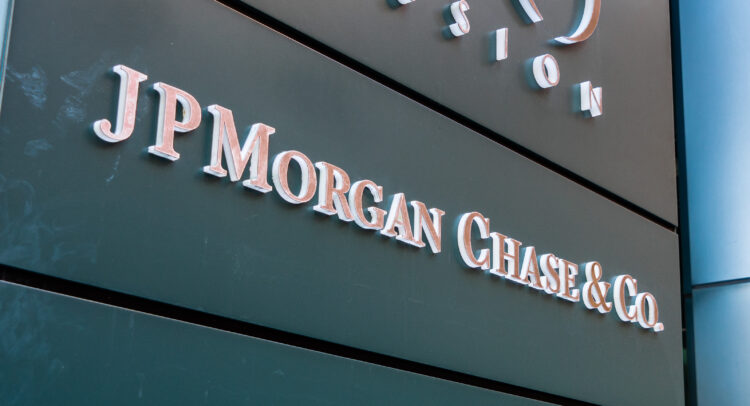JPMorgan (NYSE:JPM) is often referred to as the best bank. It’s the U.S.’s number one bank in terms of assets, has a global reach, and Chairman of the Board and CEO Jamie Dimon is widely considered among the most influential and reliable individuals in finance. However, I’m not convinced that the stock offers the best value for investors. I’m neutral on JPMorgan and would rather consider banking investment opportunities overseas, such as the Italian bank Intesa Sanpaolo (OTC:ISNPY), which I’m bullish on.
Discover the Best Stocks and Maximize Your Portfolio:
- See what stocks are receiving strong buy ratings from top-rated analysts.
- Filter, analyze, and streamline your search for investment opportunities with TipRanks’ Stock Screener.
JPMorgan Comes at a Price
JPMorgan trades at multiples far in excess of its European counterparts. Of course, U.S. banks trade at premium valuations, but at 12.5x non-GAAP forward earnings, it’s trading at a 16% premium to the sector as a whole. Moreover, JPMorgan is trading towards the higher end of its historical fair value range. As such, the valuation is starting to look a bit stretched.
Moreover, from a price-to-book (P/B) perspective, the juggernaut of U.S. banking is also looking particularly expensive. JPMorgan currently trades with a P/B ratio of 1.89x, putting it at a 65.3% premium to the sector as a whole. A P/B ratio above one indicates the market values the bank’s assets and future earnings potential higher than its book value. However, at 1.89x, the market value infers that the bank’s assets and future earnings potential are worth double the current book value.
This doesn’t correlate with growth expectations. Analysts expect JPMorgan’s earnings per share to grow modestly at 4% annually over the next three to five years. This actually represents a 55.3% underperformance versus the sector as a whole, which is expected to see earnings grow by 9.6% annually over the same period.
In turn, JPMorgan’s price-to-earnings-to-growth (PEG) ratio isn’t attractive at all. The PEG ratio currently works out at 3.13x, inferring that the stock is considerably overvalued when its growth prospects are taken into account. While I do put a lot of emphasis on the PEG ratio, I appreciate that it’s not the perfect metric for judging fair value, especially when companies pay a dividend. But taking JPMorgan’s 2.28% forward dividend yield into account, I still believe the banking stock is overvalued.
Of course, quality comes at a price. JPMorgan is arguably too big to fail, and its CET1 ratio — a key measure used in banking to assess a financial institution’s stability and ability to withstand financial stress — stands at an industry-topping 15%.
JPMorgan’s Guidance Underwhelms
JPMorgan beat top- and bottom-line expectations in its latest Q1 earnings. Non-GAAP earnings per share came in at $4.63, beating estimates by $0.50, and revenue reached $41.93 billion, beating the consensus by $240 million.
The bank saw its net revenue climb to $42.5 billion, marking an 8% increase, or a 4% rise excluding the impact of its First Republic acquisition. Meanwhile, net interest income (NII) jumped to $23.2 billion, reflecting an 11% uptick, or a 5% increase excluding First Republic. Similarly, NII excluding Markets — a non-GAAP financial measure — reached $23.0 billion, representing 10% growth, or a 4% rise excluding First Republic.
JPMorgan said that growth was propelled by a combination of factors, including higher rates and higher revolving balances in Card Services. However, these gains were partially offset by deposit margin compression and a fall in deposit balances within Consumer and Community Banking.
However, while the results appeared positive, investors weren’t impressed by JPMorgan’s decision not to change its full-year guidance. This Q1 earnings beat and lack of change in the guidance infers that the company is forecasting a more challenging rest of the year.
Avoid JPMorgan and Look to Europe?
European banks have also performed well in recent months, with several hitting post-pandemic highs. Despite hitting these highs, I believe several European banks offer stronger investment propositions than JPMorgan.
For example, Italian bank Intesa Sanpaolo is currently trading at 7.6x forward earnings and 1.03x book value. With earnings expected to grow around 7.6% annually over the next three to five years, the stock also has a PEG ratio of around 1.0x. That’s much more attractive than JPMorgan.
Is JPMorgan Stock a Buy, According to Analysts?
JPMorgan stock is currently rated a Strong Buy, according to analysts. There are 18 Buy ratings and just four Hold ratings. The average JPMorgan stock price target is $214.66, with a high forecast of $231.19 and a low forecast of $195.00. The average price target represents 6% upside potential.

The Bottom Line on JPMorgan Stock
While JPMorgan is rated a Strong Buy, its average price target only implies 6% upside potential. I’d suggest that analysts haven’t kept up with the surging share price on this occasion. Personally, I’m neutral on JPMorgan stock. I appreciate that there may be some limited upside as indicated by the share price target. However, I’d rather invest my money into stocks that are clearly undervalued. Intesa Sanpaolo is among my top picks in the current environment.









